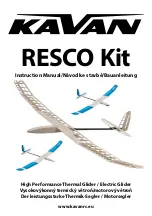
Hélicoptères Guimbal
SECTION 4
CABRI G2
NORMAL PROCEDURES
4-13
Take-off procedure
On clear flat area
1. Apply collective pitch progressively to stabilize hover at
2 feet skid height
.
2. Adjust cyclic trim.
3. Check engine parameters in green arcs and warning / caution lights OFF.
4. Apply slight forward cyclic to accelerate at a constant height.
5. At 45 kt IAS, rotate to reach and maintain 50 kt IAS.
6. Once climb is stabilized, adjust power as needed. Rate of climb should not
exceed 500 ft/min below 100 feet in order to ease piloting in case of an
engine failure.
7. Follow take-off profile shown on Height-Velocity diagram shown page 5-3 :
Note 1 :
Take-off is possible without increasing power in case of a very slow
acceleration on hard surface.
Note 2 :
Take-off run may be shortened, by raising slightly the collective to
compensate for height loss, if power margin enables it.
On other surface
(confined area or surrounded by obstacles)
Refer to HOGE performance page 5-4.
Adapt acceleration procedure to environment by keeping rotor disk above
horizon and avoiding as far as possible Height / Velocity limiting area (refer
to page5-3).
2 ft
0 kt
10 ft
45 kt
20 ft
50 kt















































